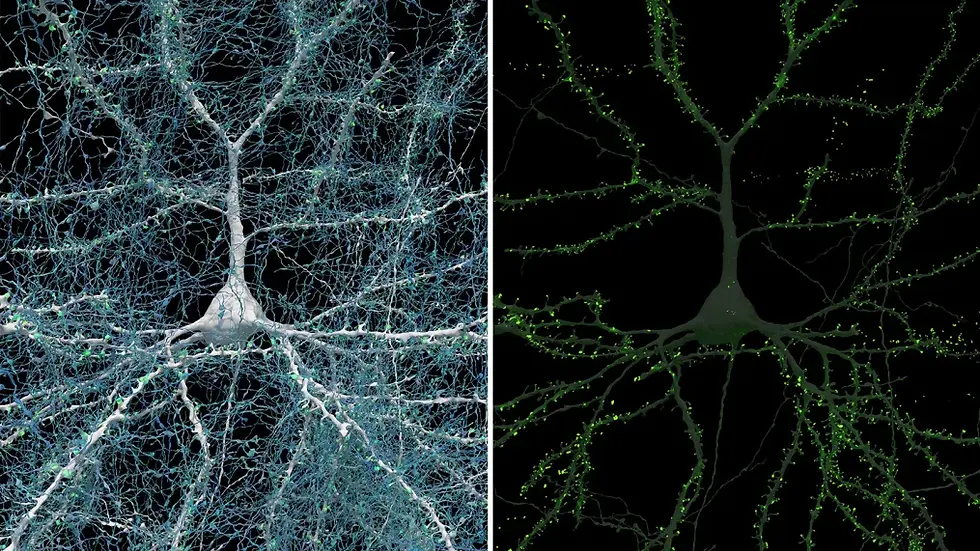How AI is Revolutionising Neuroscience: 5 Groundbreaking Advance
- Parnian

- Mar 17
- 3 min read

Artificial intelligence (AI) is transforming neuroscience by improving brain imaging, decoding brain signals, advancing brain-computer interfaces, accelerating drug discovery, and mapping the brain. These breakthroughs are not just theoretical—they are already making a difference in real-world applications. In this post, we’ll explore five key ways AI is shaping neuroscience, along with case studies that highlight its impact.
1. AI-Powered Brain Imaging and Analysis
AI has significantly improved brain imaging by enhancing the detection of neurological disorders through MRI, fMRI, and PET scans. Machine learning models can analyse vast amounts of brain scan data, identifying patterns that may be invisible to the human eye.
Case Study: AI Detecting Alzheimer’s Disease
Researchers at the University of California, San Francisco, developed an AI model that can detect Alzheimer’s disease up to six years before clinical symptoms appear. The model analyses PET scans and identifies early signs of the disease with over 90% accuracy, providing an opportunity for earlier intervention and treatment.
2. Understanding and Decoding Brain Signals
AI-powered models are improving our ability to interpret brain signals recorded from EEG and MEG scans. These advancements help researchers understand brain function, diagnose mental health disorders, and even predict seizures in epilepsy patients.
Case Study: AI Predicting Epileptic Seizures
A study conducted at the Mayo Clinic used AI to analyse EEG recordings and predict epileptic seizures with 99.6% accuracy. The model was able to recognise brain activity patterns that precede a seizure, giving patients more time to take preventive measures.
3. Advancing Brain-Computer Interfaces (BCIs)
Brain-computer interfaces (BCIs) use AI to interpret neural activity and translate it into commands that control external devices, such as robotic limbs or communication software for people with paralysis.
Case Study: Restoring Speech to a Paralyzed Patient
In 2021, researchers at the University of California, San Francisco, successfully used AI-driven BCI technology to restore speech in a man who had lost his ability to talk due to a brainstem stroke. By analysing brain signals associated with speech, the AI was able to convert them into text on a screen in real-time, offering a new way for patients with severe disabilities to communicate.
4. AI in Drug Discovery for Neurological Disorders
AI is accelerating drug discovery by analysing biological data and predicting which compounds could be effective treatments for neurological disorders. This reduces the time and cost required to develop new drugs.
Case Study: AI Identifying Potential ALS Treatments
In 2023, researchers at IBM and the Barrow Neurological Institute used AI to identify potential drug candidates for amyotrophic lateral sclerosis (ALS). The AI model screened millions of molecular compounds and found new ones that could target the disease, speeding up research for a condition that currently has limited treatment options.
5. Mapping the Human Brain with AI
The human brain consists of billions of neurons and trillions of connections, making it incredibly complex. AI-powered models help neuroscientists map these connections, leading to breakthroughs in understanding neurodevelopmental disorders and brain function.
Case Study: AI Creating the Most Detailed Brain Map
In 2023, Google and Harvard University used AI to create the most detailed 3D map of the human brain ever produced. The model reconstructed millions of neurons and their connections using advanced deep-learning techniques. This research is helping scientists understand how neurons communicate and could lead to better treatments for conditions such as schizophrenia and autism.
Final Thoughts
AI is revolutionising neuroscience in ways that were unimaginable just a decade ago. From early disease detection to restoring lost functions, its impact is profound and growing. As AI continues to evolve, its role in understanding and treating brain disorders will only become more significant.
Sources:
University of California, San Francisco. Artificial Intelligence Can Detect Alzheimer’s Disease in Brain Scans Six Years Before a Diagnosis. UCSF News, 2019, https://www.ucsf.edu/news/2019/01/412946/artificial-intelligence-can-detect-alzheimers-disease-brain-scans-six-years.
Mayo Clinic. Study Shows Potential of Wrist-Worn Devices to Predict Seizures. Mayo Clinic, 2022, https://www.mayoclinic.org/medical-professionals/neurology-neurosurgery/news/study-shows-potential-of-wrist-worn-devices-to-predict-seizures/mac-20524785.
Mayo Clinic. Using AI to Improve Brain Stimulation Devices. Mayo Clinic, 2023, https://www.mayoclinic.org/medical-professionals/neurology-neurosurgery/news/using-ai-to-improve-brain-stimulation-devices/mac-20528554.
Epilepsy Digital Health Initiative. Untapped Potential of Artificial Intelligence for Analysis of Epileptic Electrophysiology Data. MCP Digital Health, 2024, https://www.mcpdigitalhealth.org/article/S2949-7612%2824%2900005-1/fulltext.
Jain, Viren. “Ten Years of Neuroscience at Google Yields Maps of Human Brain.” Google Research Blog, 2 May 2024, https://research.google/blog/ten-years-of-neuroscience-at-google-yields-maps-of-human-brain/.



Comments